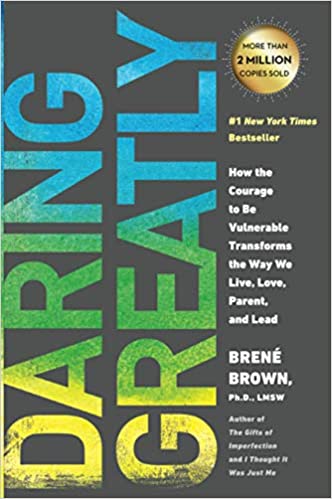Are you aware of the power of eye contact in communication? It’s time to master this valuable skill and understand the different types of eye contact and their significance. Welcome to the world of eye contact mastery!
Eye contact plays a vital role in how we connect and communicate with others. It can convey emotions, build trust, and establish strong connections. Knowing the different types of eye contact can help you navigate various social and professional situations with confidence.
In this article, we will explore the 10 types of eye contact and delve into their significance in communication. From the fleeting glance to the intense gaze, each type carries its own message and impact. Whether you’re networking, interviewing, or simply having a conversation, understanding these types of eye contact can give you a competitive edge and help you build better relationships.
So, if you’re ready to improve your communication skills and harness the power of eye contact, let’s dive in! Mastering the art of eye contact will not only enhance your personal and professional interactions but also make you a more effective communicator overall.

Daring Greatly
by Brene Brown
⏱ 13 minutes reading time
🎧 Audio version available
The importance of eye contact in communications
Eye contact is a fundamental element of communication. It is a nonverbal cue that can convey a range of emotions and attitudes, including interest, affection, aggression, and dominance. Research has shown that eye contact can influence how we perceive others, build trust, and establish rapport.
In fact, studies have found that people who maintain eye contact are perceived as more likable, trustworthy, and confident than those who avoid eye contact. Eye contact also plays a crucial role in social bonding, as it can promote feelings of empathy and emotional connection.
However, the significance of eye contact can vary depending on cultural and social contexts. For example, in some cultures, prolonged eye contact is considered a sign of disrespect or aggression, while in others, it is a sign of respect and interest.
The psychology behind eye contact
Eye contact is a complex behavior that involves multiple cognitive and emotional processes. Eye contact is regulated by the autonomic nervous system, which controls the muscles that move the eyes and the pupils.
When we make eye contact with someone, our brains release oxytocin, a hormone that is associated with social bonding and trust. Oxytocin is also linked to increased empathy, altruism, and cooperative behavior.
Eye contact can also influence our physiological responses, such as heart rate and blood pressure. Studies have found that prolonged eye contact can increase arousal and activate the sympathetic nervous system, which is responsible for the fight-or-flight response.
Direct eye contact
The first type of eye contact we’ll explore is direct eye contact. This occurs when two individuals lock eyes and maintain a steady gaze. Direct eye contact is often seen as a sign of confidence, assertiveness, and sincerity. When engaging in direct eye contact, it’s important to strike a balance between maintaining eye contact and not making the other person feel uncomfortable. Too much direct eye contact can be intimidating, while too little can come across as disinterested or untrustworthy.
Direct eye contact is especially crucial in professional settings, such as job interviews or business meetings. It shows that you are actively engaged and interested in the conversation. In social settings, direct eye contact can signal attraction or a desire to connect on a deeper level. However, it’s important to be mindful of cultural differences, as eye contact norms vary across different cultures.
Averted eye contact
In contrast to direct eye contact, averted eye contact occurs when someone intentionally avoids eye contact by looking away or down. This can indicate discomfort, shyness, or a lack of confidence. Averted eye contact is often observed in situations where individuals feel anxious or insecure, such as during public speaking or when meeting someone new.
While averted eye contact can be interpreted as a lack of interest or engagement, it’s essential to consider the context and individual differences. Some people may naturally have averted eye contact due to cultural or personal reasons. It’s crucial not to jump to conclusions based solely on this type of eye contact. Instead, pay attention to other non-verbal cues and verbal communication to get a better understanding of the person’s thoughts and feelings.
Intermittent eye contact
Intermittent eye contact refers to the act of making eye contact in short bursts, rather than maintaining a continuous gaze. This type of eye contact is often seen in situations where individuals are multitasking or feeling distracted. It can also be a sign of nervousness or uncertainty.
Intermittent eye contact can be challenging to interpret, as it can have different meanings depending on the context. In some cases, it may indicate a lack of interest or engagement. However, it can also be a result of external distractions or an individual’s natural communication style. When engaging in intermittent eye contact, it’s essential to be mindful of how it may be perceived by others and adjust accordingly to maintain effective communication.
Prolonged eye contact
Prolonged eye contact occurs when individuals maintain eye contact for an extended period. This type of eye contact can be intense and intimate, as it often signals a strong connection or intense emotions. Prolonged eye contact is commonly associated with romantic or deep personal interactions.
In some cultures, prolonged eye contact may be seen as a sign of respect or attentiveness. However, it’s crucial to be mindful of individual boundaries and comfort levels, as prolonged eye contact can also be perceived as invasive or intimidating. When engaging in prolonged eye contact, it’s important to gauge the other person’s response and adjust accordingly to maintain a comfortable and respectful interaction.
Avoidant eye contact
Avoidant eye contact is characterized by actively avoiding eye contact with another person. This can involve looking away, down, or focusing on something else in the environment. Avoidant eye contact is often associated with feelings of guilt, shame, or deception.
When someone engages in avoidant eye contact, it can be a sign that they are hiding something or feeling uncomfortable with the situation. It’s important to be aware of this type of eye contact and consider it in conjunction with other non-verbal cues and verbal communication. However, it’s essential not to jump to conclusions based solely on avoidant eye contact, as there may be other factors influencing the person’s behavior.
Related: Are You in an Incompatible Relationship? Discover the 10 Clear Signs
Cultural differences in eye contact
It’s important to note that eye contact norms vary across different cultures. In some cultures, direct eye contact is seen as a sign of respect and attentiveness, while in others, it may be considered disrespectful or confrontational. Understanding and respecting these cultural differences is crucial for effective communication.
When interacting with individuals from different cultural backgrounds, it’s important to educate yourself about their specific eye contact norms. This will help you navigate conversations and build strong relationships based on mutual respect and understanding. By being culturally sensitive and adaptable, you can avoid misunderstandings and foster meaningful connections with people from diverse backgrounds.
While it’s important not to jump to conclusions based solely on your instincts, they can serve as a valuable guide when navigating your relationships. If you consistently find yourself feeling uneasy or anxious around someone, it’s worth exploring why that might be and considering whether there is an underlying issue that needs to be addressed.
What Is Snapreads?

With the Snapreads app, you get the key insights from the best nonfiction books in minutes, not hours or days. Our experts transform these books into quick, memorable, easy-to-understand insights you can read when you have the time or listen to them on the go.
